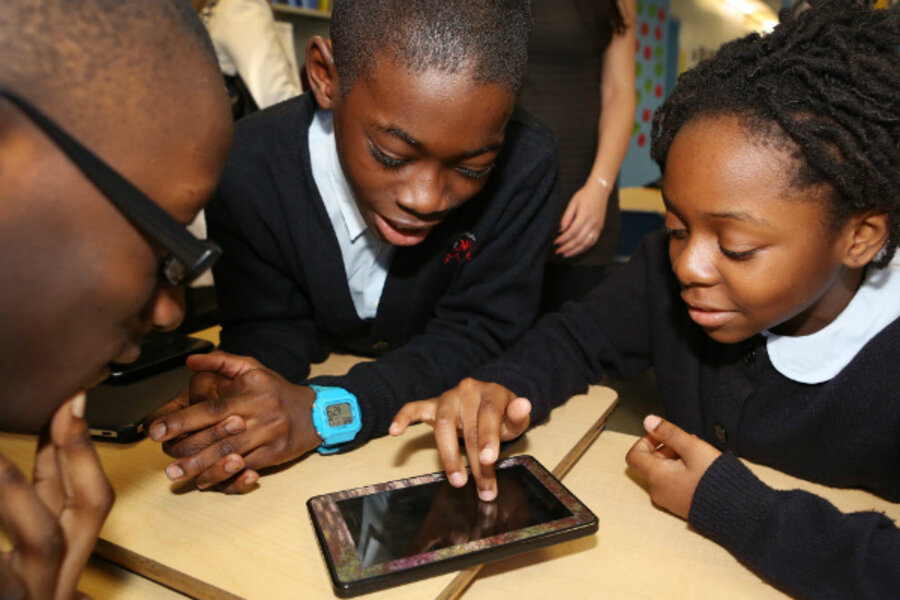Not just 4 texting: 1 in 3 middle-schoolers uses smart phones for homework
Loading...
Move over, Angry Birds. It’s time to tackle a math problem.
A new survey finds that about a third of middle-schoolers now use smart phones or tablets not just for entertainment and communication, but also for homework.
Paired with young people’s interest in science, math, and technology, it’s another sign of the potential for digital learning that educators are slowly beginning to tap.
“Most people talk about STEM subjects and technology at the high school level, [but] the critical intervention really should be happening in the middle school, because that’s the age when kids either can get excited about science and technology and math … or they can get turned off,” says Rose Stuckey Kirk, president of the Verizon Foundation, which commissioned the new survey.
The national survey of 1,000 students in Grades 6 through 8 found that:
- 39 percent use smartphones for homework.
- 26 percent use smartphones at least weekly for homework.
- 31 percent use tablets for homework.
- 29 percent of those with household incomes under $25,000 use smartphones for homework.
- Hispanics and African-Americans are more likely than whites to use smartphones for homework, at 49 percent, 42 percent, and 36 percent, respectively.
Beyond accessing information over the Internet on such devices, students often turn to free apps to play games to help them master math concepts, to virtually “dissect” an animal or analyze clouds and condensation, and to collaborate with peers on projects, Ms. Kirk says.
Yet schools and teachers struggle to keep up with students’ interest in the ever-changing technology landscape.
Some educators are hesitant to embrace more digital devices for fear it will open up a Pandora’s box beyond their control, education experts say. For some, concerns may be based on reports of teens being distracted by games in class or using technology to bully other students, while others may simply not have the confidence that they can master the new technology and harvest it for productive purposes, especially given time and budget constraints.
But some schools and whole districts are jumping into digital technologies to try to engage both students and teachers in a new way, one they see as better adapted to the demands of 21st-century jobs.
Among the middle-schoolers surveyed, 88 percent said they are not allowed to use smartphones for learning purposes in school, and 68 percent said the same about tablets.
Such restrictions on technology use are even more common among low-income students, the survey found. Yet half of African-American and Hispanic middle-schoolers, who are more often concentrated in low-income schools, report an interest in science and computer science.
“We have an opportunity inside of those environments to be very deliberate in how we engage students,” Kirk says. “Digital devices can have an impact. But we can also make it about the STEM subjects, and move these kids onto a pathway that could result in higher incomes.”
The Verizon Foundation already offers training to educators on integrating mobile technology into lesson plans.
Now it is partnering with the Technology Student Association and the Massachusetts Institute of Technology to sponsor the Innovative App Challenge. Hundreds of teams of students are conceptualizing mobile applications that incorporate STEM activities and contribute to solving a problem in their schools or communities.
Five teams from middle schools and five from high schools will be chosen as winners. In addition to winning Samsung Galaxy Tabs for themselves and $10,000 grants for their schools, they’ll be given assistance to create their apps and bring them to the public.








